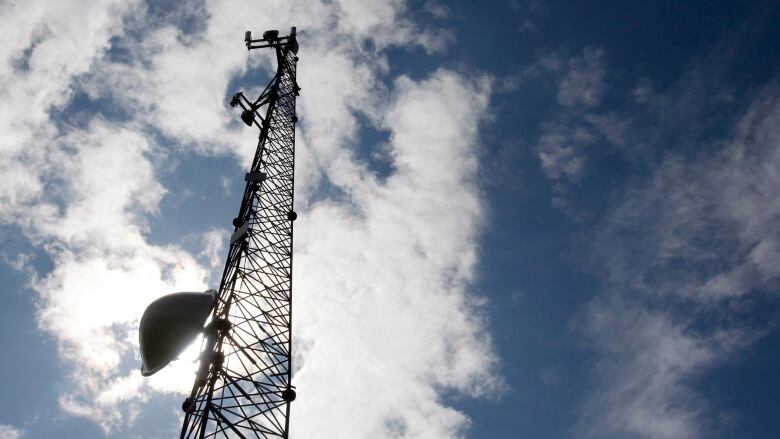Alberta broadband strategy unclear despite push from province, feds for connectivity
Federal government aims to have high-speed access for 98% of Canadians by 2026

The federal and provincial governments are working toget more households connected to high-speed internet,but details of a long-awaited Alberta strategy remain scarce.
Budget 2021 mentioned a provincial broadband strategy but the minister in charge of the file says the specifications of the plan are still being determined and rely a lot on Ottawa dollars.
"Given the federal jurisdiction, we expect that they will need to play a bigger role," Nate Glubish, the minister of Service Alberta, told CBC News.
"We absolutely do need to see additional funds coming from the feds."
Telecommunications falls under Ottawa's purview, so an Alberta strategy would have to work in collaboration. Provincial governments havebeen promising a broadband strategy since 2018.
The federal Liberals launched theUniversal Broadband Fund in 2020 as part of their pledge to connect 98 per cent of Canadians to high-speed internet by 2026, and complete the remaining two per cent by 2030. Canada's connectivity strategy aims to provide access to speeds of 50 Mbps download and10 Mbps upload.
In 2017, less than nine per cent of rural Alberta communities had access to those speeds, according to the CRTC.
So far, the fund is for $1.75 billion Canada-wide, of which Alberta expects around $200 million. The minister's office estimates it would cost $1 billion to connect all Albertans to the target internet speed.
The minister did not say what portion of the money or resources the province could contributebut said it's not possible for the province to get to 100 per cent connectivity on its own.
"It's an extremely large and complex problem," Glubishsaid.
Alberta has been working on internet infrastructure independent of the federal government as well, like its SuperNetconnections.
Federal funding for broadband slowly rolling out
The issue requires co-ordination between federal, provincial and municipal governments, as well as with private companies providing the services.Glubish has an upcoming call with his federal counterpart to figure out next steps and what additional funding is needed.
In the interim, money from Ottawa has already begun to roll out in Alberta.
Earlier this month, thegovernmentannounced$5.4 million would be provided for high-speed internet projects in Alberta. Telus pledged an additional $3.7 million. It's estimated about 5,000 households will benefit from those investments.
In December, Ottawafunded a Netago Internet project to connect more than 7,000 households in Starland and Stettler Countiesby November.
"To date, the federal government has invested nearly $40 millionin broadband funding for Alberta that will potentially benefit over 50,000 households across a number of federal broadband programs," said a statement from the office of Maryam Monsef, federal minister of rural economic development.
"While our government is playing a leadership role by providing funding, it is imperative that all orders of government across Canada, as well as the private sector, internet service providers and other stakeholders,lend support and resources to closing the broadband gap and achieving the targets set out in Canada's connectivity strategy."
However, it's only a fraction of the $1 billion needed, according to the province.
Despite the strategy not being finalized yet, the minister has an outcome in mind.
"My goal for the Alberta broadband strategy is to ensure that we're doing everything we can to ensure that all of these players are pulling in the same direction and ensuring that any deployment of resources to expand connectivity infrastructure are deployed in an optimal fashion."
Looking beyond 2030
But experts have been waiting for more details on the provincial strategy for years. In 2018, a report from Service Alberta promised a strategy by the end of that year. Three years and a government change later, there's still no program to roll out.
"It's not necessarily a situation where we're perhaps expectinglarge outlays, but the provincial government could do other things as well," said Michael McNally, an associate professor at the School of Library and Information Studies at the University of Alberta.
"Itcan also encourage that when any construction projects are going in, you can build empty conduit. It's basically just an empty tube. And then in the future, that could be used to put in fibre optic cables on the federal side of things."
Community awareness, education and access to technology are all challenges rural areas of Alberta face when trying to get high-speed broadband, McNally said.
"What's really key, though, I think, is not just thinking about that current speed targetbut making sure whatever kind of infrastructure we're building meets not only that target, but potential targets into the future," he said.
While the province and federal government work out details, some municipalities are charging ahead with internet infrastructure themselves.
Parkland County has invested $7 million over the last decade. In 2019, Viking installed an internet antenna in a grain elevator to boost speeds in the town. Last summer, the Town of Vermilion tested a six-month broadband pilot project on its own dime.












_(720p).jpg)


 OFFICIAL HD MUSIC VIDEO.jpg)
.jpg)



























































































